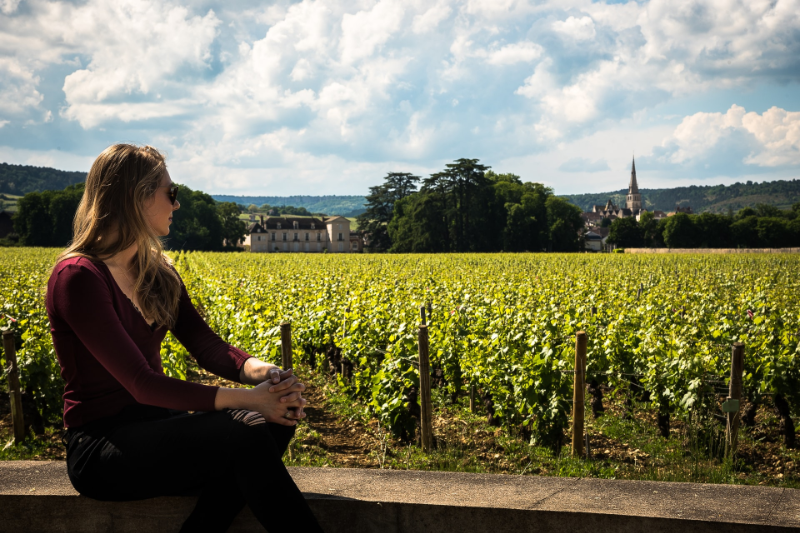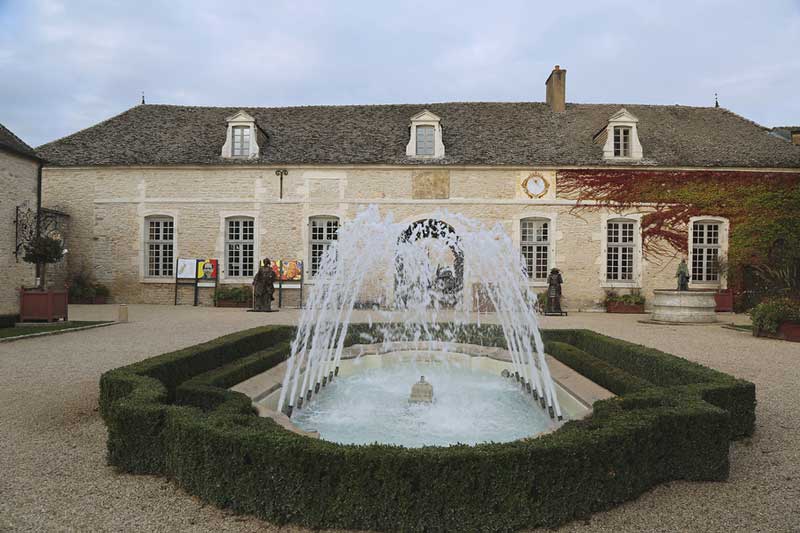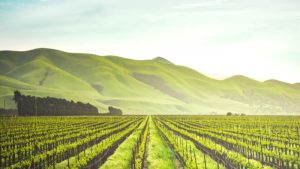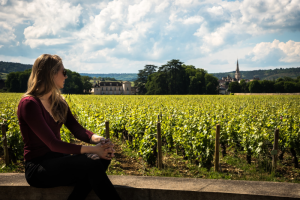A Sip of Burgundy Will Take You to Paradise

To a food lover, the word Dijon brings to mind the spicy flavor of the very sharp local mustard. But the region enveloping Dijon—the home of this piquant delicacy is equally famous: Burgundy. Land of cheese, wine and escargots.
Spanning an area of over 31,600 km2, this beautiful region is home to more than a million people. It comprises four sub-regions known as départments, will please history buffs with 263 preserved Romanesque buildings, and has a total of 1,200 km of rivers. But there is one much more important liquid in Burgundy that does not run in rivers—wine. The region produces 1.3 million hectoliters per year, and makes up 3% of the annual wine production of France.
Small Area, Big Influence
In comparison to other French wine regions, Burgundy is small in area. Even so, its fertile soil makes it a wine lover’s paradise. Much is attributed to the region’s ‘terroir,’ especially in the vineyard estates at higher altitudes, where the soil is rich in limestone. Burgundy is also the home of Pinot Noir and Chardonnay—the grape varieties from which Burgundy wines are almost exclusively made. Despite its small size, the Burgundy region produces wines of great renown. Its long-standing competitor in the field of winemaking has been the equally famous Bordeaux, and the “Bordeaux or Burgundy” debate continues unabated. We believe that both regions have wonderful wines, but the final verdict is up to you. Here, you will find our current selection of Burgundy wines.
The Romans, the Monks and the Bourgeoisie
The region of Burgundy stretches from Auxerre in the north to Lyon in the south. The most famous part of Burgundy is certainly Côte d’Or, the Golden Coast. True to its name, the local wine often wins gold at prestigious wine competitions, and gold was also the precious currency earned by wine merchants in the olden days. After the Romans conquered Gaul in 51 BC,Burgundy was the first area they visited. Although prior Celtic attempts at viticulture have been documented, it was the Romans who took local winemaking to the next level. Once agriculture was introduced, however, the winemaking baton passed to the religious community.
The golden age of winemaking began in about 910, when the Benedictine monks founded the first major vineyard. The Cistercians followed suit in 1098, and by 1336, they built Clos de Vougeot, the largest walled vineyard. The geography of the region did not allow for extensive export. The only feasible way to travel and export goods to distant places was via river routes. The entire production of wine in Burgundy in the 14th and 15th centuries was a rather isolated business, as the ruling House of Valois strictly banned all import and export of non-Burgundy wines. This helped the local winemaking flourish and then, when roads became more reliable in the 18th century, new possibilities opened for trade. During this period, local winemakers focused on serving the lucrative and highly challenging Parisian market. This era also brought antagonism between the regions of Burgundy and Champagne.
Another turning point in the history of Burgundy wine came when the region became a province of the Kingdom of France: the role of the Church in wine production decreased and vineyards were sold off to the bourgeoisie. The French Revolution of 1789 ripped up connections that had been meticulously built up between vineyards, and trampled most local industry into the ground. In Napoleonic times, the most valuable vineyard tracks were preserved and the future began to look brighter. In 1855, spurred on by Napoleon III, the Bordeaux Wine Classification was released, which emphasized the stature of Burgundy and helped it regain a competitive edge.
A blow came with the Great Depression in 1930, followed by WWII, which drove vineyard owners out of their estates, causing considerable damage. Stability returned in the 1950s, giving rise to some of the best Burgundy wines. The following years brought land restoration and advances in vine growing. The latest important period came between 1985 and 1995, when a great effort was made to turn Burgundy into a wine region of worldrenown. The hard work paid off, as the current popularity of Burgundy wines amply demonstrates.
Prestige in Every Bunch
The Burgundy winemaking region is divided into administrative units called départements in French, which are synonymous with meticulous vinicultural practices and outstanding vintage wines of high market value. They include both fresh and fruity white wines, as well as plummy and aromatic reds.

Côte d’Or
This département is the undisputed gem of Burgundy. It comprises two areas that include Côte de Nuits and Côte de Beaune, better known together as Côte d’Or. The wines produced here are among the most expensive and most prestigious French wines. They have a characteristic bouquet and plummy flavor with smoky and chocolate overtones.
Major area wineries:
- Romanée-Conti
- Clos de Vougeot
- La Tâche
- Richebourg
- Pommard
Chablis
For a long time, white wine was underappreciated in France. That changed with Chablis. The white wine of Chablis has been steadily gaining the appreciation it has long merited. While being grown, the grapes in the vineyards are frequently subjected to freezing temperatures, which calls for special grape-saving measures. Some vintners resort to intricate ways of warming the plants up, while others spray them with water to create an ice coating on the grapes for insulation. Chablis wines are fruity and fresh—the result of the abundant sunshine to which the grapes are exposed on the slopes where they grow.
Major area wineries:
- Les Blanchots
- Bougros
- Les Clos
- Les Grenoullies
- Les Preses
Beaujolais
Patriotic Burgundians tend to look down on this area, but the quality of the local wine suggests that it is just a teasing kind of rivalry. To begin with, Beaujolais is the home of the famous Beaujolais Nouveau, which we are all thrilled to taste on the third Thursday each November. In order to be licensed for sale immediately after the fermentation process is finished, it must be made from Gamay grapes.
Major area wineries:
- Brouilly
- Morgon
- Chiroubles
- Chénas
Read more about wine growing in France in our article French wines from Champagne to Languedoc-Roussillon.
Select wines. In your email.
once every month. You can look forward to our recommendations, interesting content, and great offers for your archive for your archive.
By sending an email you agree to the Terms and Conditions for Protection of Personal Data



